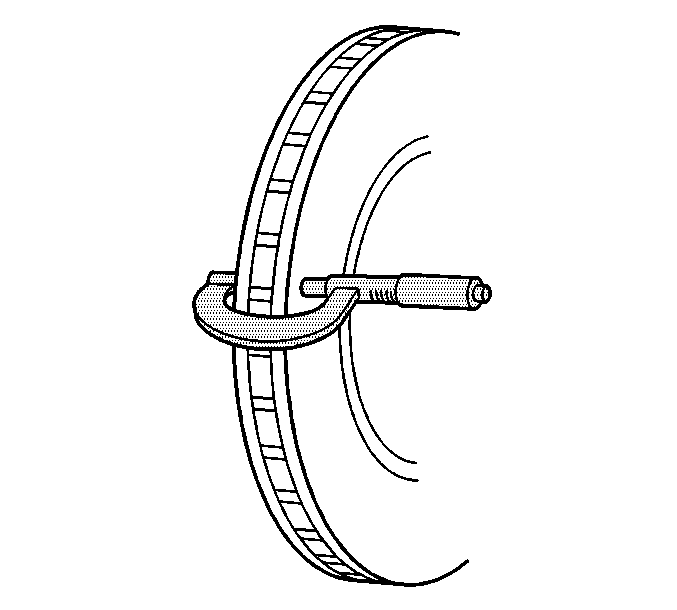
- Clean the brake pad lining contact surface
of the brake rotor with denatured alcohol or an equivalent brake cleaner.
- Using a micrometer calibrated in ten-thousands of an inch, measure and
record the lowest thickness of the brake rotor at four or more points, equally
spaced around the rotor.
Ensure that the measurements are only taken within the brake pad lining contact
area and that the micrometer is positioned the same distance from the outside
edge of the rotor for each measurement.
- Compare the lowest thickness measurement recorded to the following specifications:
Specification
| • | Front brake rotor minimum allowable thickness after refinishing 31.08 mm
(1.224 in). |
| • | Rear brake rotor minimum allowable thickness after refinishing 10.25 mm
(0.404 in). |
| • | Front brake rotor discard thickness 30.7 mm (1.209 in). |
| • | Rear brake rotor discard thickness 9.00 mm (0.354 in). |
- If the lowest thickness measurement of the brake rotor is above the minimum
allowable thickness after refinishing specification; the rotor may be able to
be refinished, depending upon surface and wear conditions which may be present.
- If the lowest thickness measurement of the brake rotor is at or below
the minimum allowable thickness after refinishing specification; the rotor may
not be refinished.
- If the lowest thickness measurement of the brake rotor is at or below
the discard thickness specification; the rotor requires replacement.

